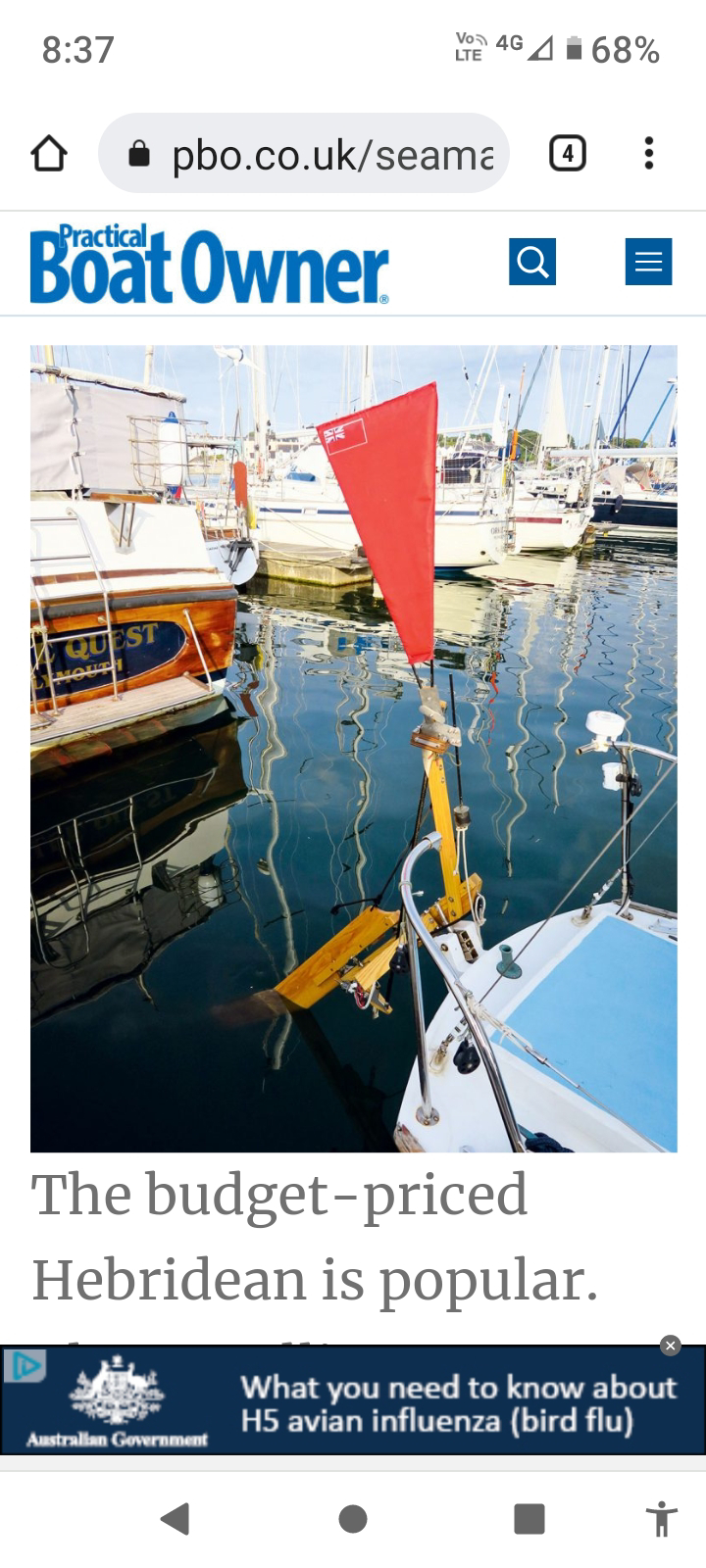Jester preparations
Following is a summary of a PBO article about 10 "must have modifications" for boats in the Jester Challenge.
Windvane Steering.
Hebridean is a popular budget vane among Jesters. Its bought as a kit & assembled using timber cut to plans.
Adequate Sleep
To avoid bad decision making or hallucinations, Jesters adopt a system of polyphasic sleep, or power-naps. Many of the Jesters use a simple kitchen timer, usually placed out of reach so they must get out of their bunk to turn it off. Mostly 10-15 minute intervals. The key to successful solo or short-handed sailing is to grab regular short naps to preserve decision making abilities.
Staying Attached to the Boat
Jesters are fastidious about their lifelines, with many fitting additional handholds on deck to increase traction.
Ladders, boarding ladders care fixed astern to reboardvif one goes overboard.
Many have led halyards and control lines back to the cockpit
A general theme is to have the webbing jacklines inboard, rather than running along the deck so that the lifeline from the body can be as short as possible.
Victualling & Cooking
* Nearly all the stoves we saw were gimballed to some extent, with the Origo alcohol models very popular.
* Carry 4.5kg of goods per day of passage, allow 20% extra for delays especially on longer passages
* storing water in portable 10l containers has an added bonus of being used as movable ballast.
Stay in Touch
Boat-mounted EPIRBs and body-worn PLBs were in widespread use
* Spot, Iridium GO! or the Garmin In-Reach systems allow family and friends to track progress as well as allowong the Jester to send simple messages.
Power Generation
there were a few wind turbines in the fleet and an occasional hydro-regenerator, the bulk of renewables came from solar panels.
Simplicity in electrical systems means lower power demands & greater self-reliance.
Electronic watch keeping
* all had AIS
* advanced weather forecasting solutions (Weatherfax or satellite services such as those provided by Garmin’s In Reach
*The JSD is king. This drogue consists of a series of small cones sewn firmly into a long piece of sinking line which is attached to reinforced plates in the hull.
Additional safety devices
Other precautions we saw were devices for emergency steering, easily deployed liferafts, and handy grab bags
Better cockpits
* occasional seats etc to make the cockpit more comfortable.
* Dodgers, domes, solid hatches & sprayhood extensions give much more protection further back from the companionway.
* Seamanship without showmanship is one motto.
* Self-reliance, partly helped by over-engineered equipment and providing for worse case scenarios.
Rules of entry
Entry (which is free) requires:-
1/ the boat must be less than 30ft (9.1m) LOA and skippered by a single-hander over the age of 18.
2. The voyage must be completed under sail only, except in an emergency
3. signing of a waiver to say you’re fully responsible for your own preparation, choice of equipment and safety.
How to participate
The starting port is Plymouth or Pwllheli. The destinations increase in distance in a revolving cycle over consecutive years, namely Baltimore in Southern Ireland (250 miles), the Azores in mid-Atlantic (1,400 miles) and Rhode Island in the USA (3,500 miles).




Comments
Post a Comment